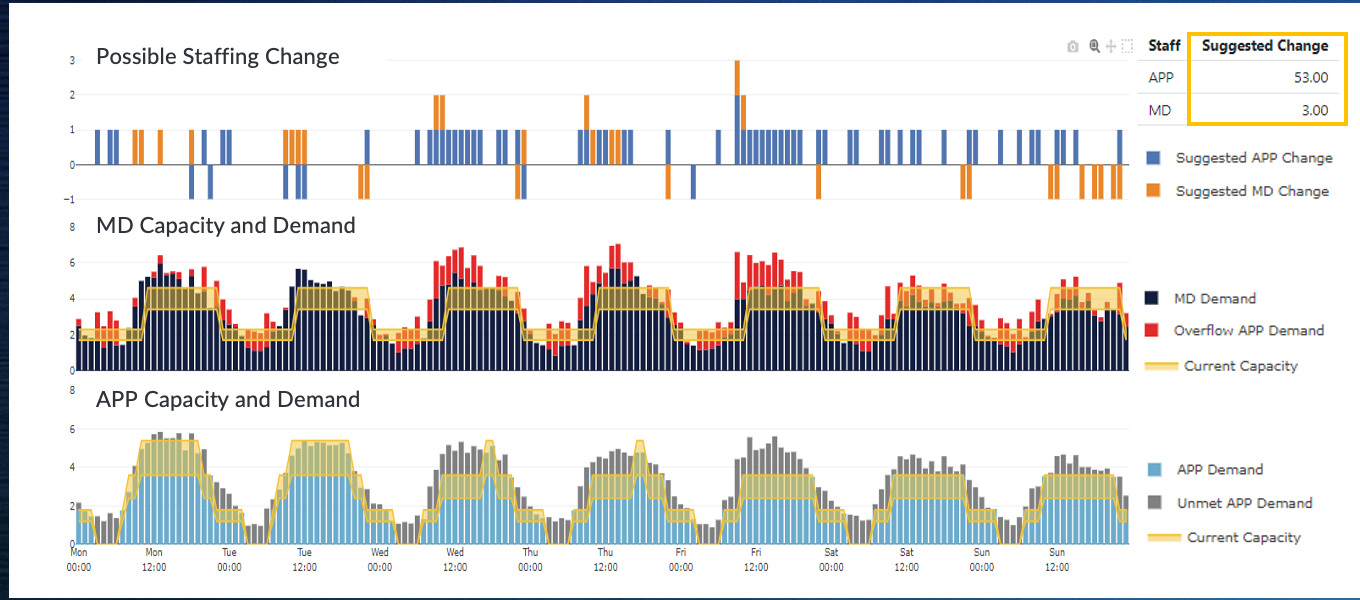Successful contract negotiations benefit everybody: the hospital, the doctors, the patients.
Knowledge is power. Use analysis of demand capacity to negotiate better emergency medicine contracts.
When emergency medicine groups negotiate a contract, many interests are involved. A successful negotiation benefits everybody: the hospital, the physicians, and the patients, among others. To achieve this outcome, emergency medicine physicians should come to the table armed with the data to persuasively make their case.
Data Makes the Difference
The American College of Emergency Physicians states that the “fundamental purpose of a contract is to specify rights and obligations of the parties through common understanding.”
To reach that common understanding, emergency medicine physicians need to bring strong data analysis to the table. They need to understand and be able to show how much staffing is needed to produce the revenue, minimize burnout, and achieve the quality of performance that the hospital expects.
It is important to highlight that staffing constitutes approximately 80% of the operational costs within a physician practice. This emphasis is essential not only for revenue optimization and high-quality care, but also for preventing overstaffing, which can swiftly thrust the group into financial hardship, as witnessed during the height of the COVID pandemic when emergency department (ED) volumes plunged by more than 40% virtually overnight.
An Effective Staffing Plan
Realistic and effective staffing plans don’t happen by accident. Figures about demand capacity are accurate only when based on solid analysis. Models should incorporate data on patient arrival patterns, ESI levels, costs, boarding, productivity, patient flow, and other factors to identify opportunities to avoid both over and understaffing.

Creating practical and efficient staffing strategies requires deliberate effort, where precise demand capacity figures rely on robust analysis.
Given the substantial variability in ED volume, it is essential to forecast demand beyond the mean and instead use percentiles. This approach enhances staff planning for improved preparedness. Accurate staffing predictions, striking the right balance between physicians and advanced practice providers (APPs), empower emergency physician groups to control costs effectively, uphold high-quality standards, ensure patient satisfaction, and reduce LWBS (Left Without Being Seen). This comprehensive approach leads to higher overall patient satisfaction. Moreover, the ability to quantify tradeoffs with various staffing options also positions you at an advantage during contract negotiations.

Accurate staffing, balancing physicians and APPs, enhances cost control, quality, and patient satisfaction, while quantifying staffing tradeoffs improves negotiation advantages.
The capability to predict the ED’s total revenue potential through data-driven insights on payer mix and behavior is invaluable. Armed with this crucial information, you approach negotiations with an enhanced understanding, bolstering negotiating leverage. It also empowers you to address pivotal questions, such as whether the hospital should provide financial support to the ED based on robust data. Subsequently, your emergency physician group can formulate growth strategies and improve performance, emphasizing essential factors like ensuring adequate staffing levels during periods of low patient volume.
Negotiation often seems like a tug-of-war between revenue and patient care, but effective data-driven strategies can maximize both.
Improving Payer Relationships
As relationships between emergency physician groups and hospitals mature, the significance of showcasing the success of implemented strategies becomes increasingly apparent. With growing confidence in the partnership and quality of services, data analysis becomes a valuable tool in informing negotiations and discussions.
Establishing robust relationships with payers is crucial in negotiations. A proven track record of preventing unnecessary and expensive care, prioritizing safe discharges over expensive admissions, and reducing patient returns – all supported by data reflecting improved patient outcomes – can set a positive tone for more favorable terms. The EM group, proactively identifying areas for improvement and proposing cost-cutting strategies aligned with shared interests, can generate fresh revenue opportunities.
Comprehensive data covering market trends, costs of delivering quality care, quality improvement programs (e.g., observation units, safe discharge practices), patient demographics, treatment preferences, and utilization patterns is crucial when negotiating with payers. A robust emergency medicine data analytics strategy not only enhances patient outcomes but also ensures the financial sustainability and success of both the emergency physician group and the hospital.
d2i is passionate about emergency medicine practice management. We offer data analytics that help organizations quickly craft and implement improvement plans. We understand the rapidly changing healthcare environment and how to navigate it. To get started, contact us for an in-depth discussion about your data analytic needs, or request a demo of our powerful, comprehensive analytics solutions.
